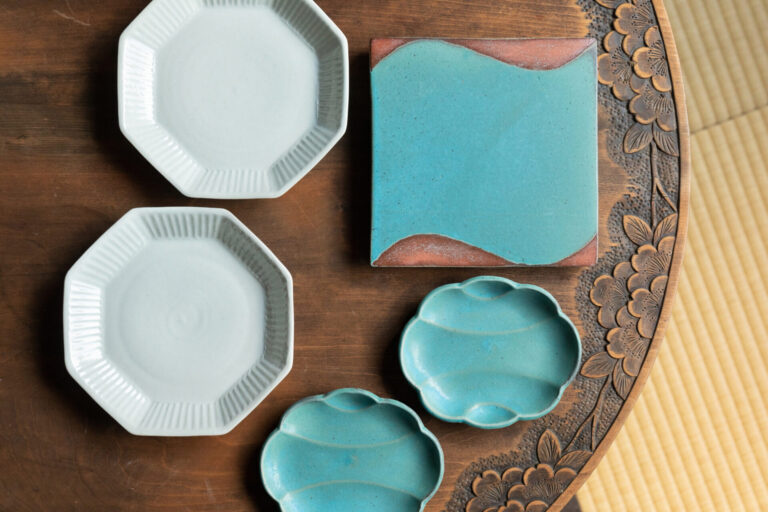
The blue colors of the Uoun Kiln by Taro Yamamoto / Utsu...
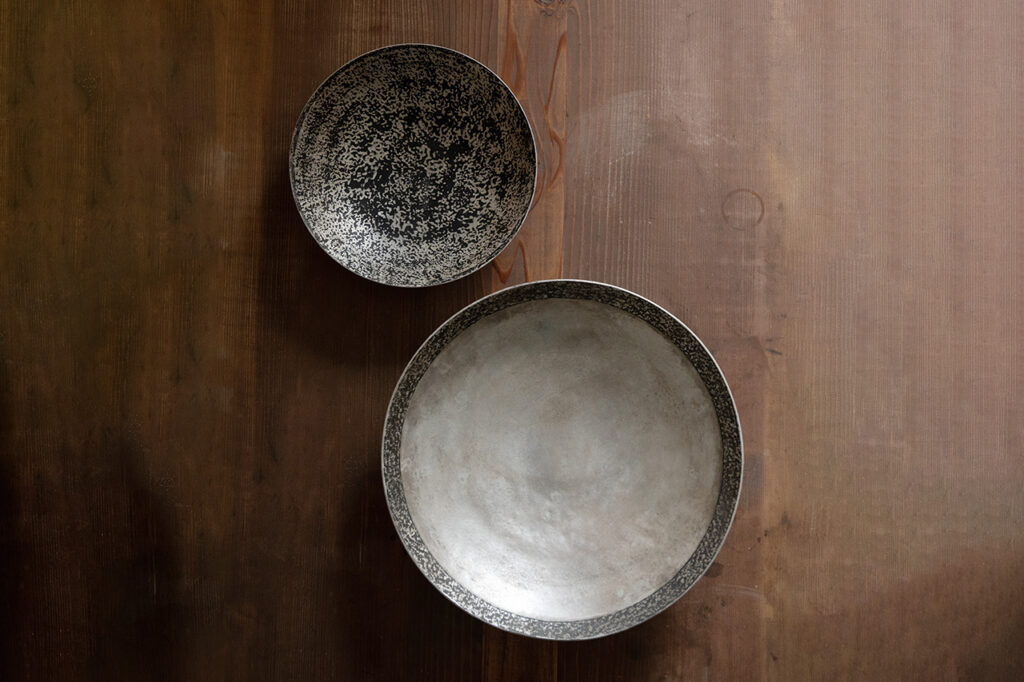

We spotlight Kyoto-based craftspeople and introduce their thoughts and works. This time, we introduce Shun Yamauchi of KOHAKUGAMA, who expresses patterns on ceramics by applying metal to the surface and scraping it off. The vessels created by Mr. Yamauchi's original technique have an original atmosphere.
To the untrained eye, it looks like a metal with a worked surface, or a metal that has faded with time. Shun Yamauchi creates ceramics with such a metallic texture using a unique technique. The origin of his unique creations lies in a single vessel he encountered when he was a student at a vocational school.
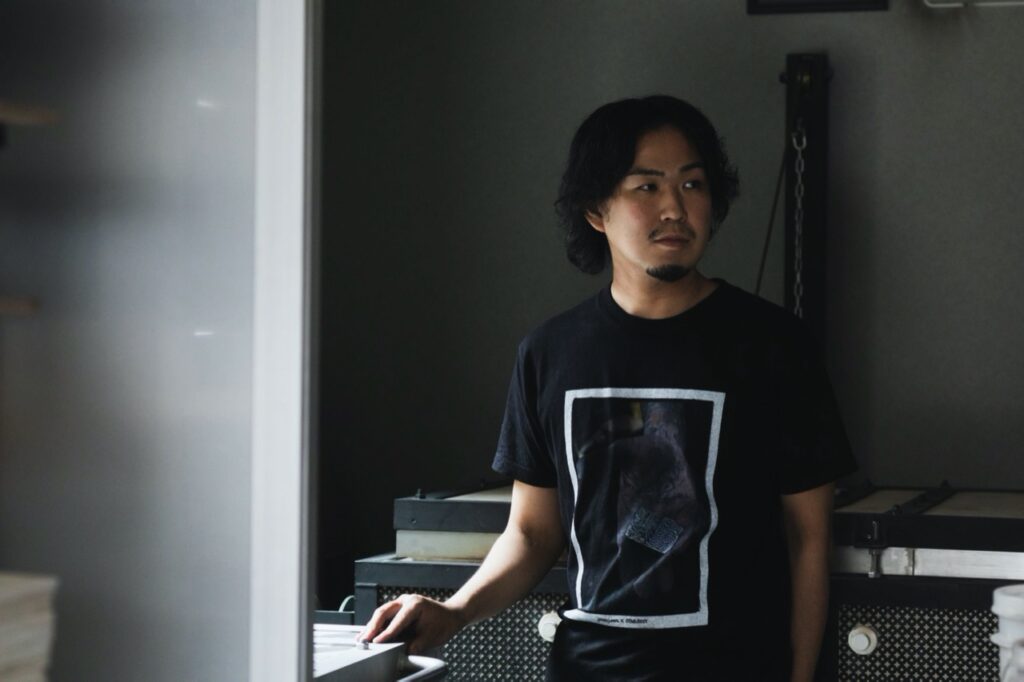
Shun Yamauchi was born in Kyoto in 1984 and grew up in Miyagi, Japan. 2006 graduated from Kyoto Traditional Crafts College and studied under Yuichi Inokai for 3 years. 2009 opened [KOHAKU-GAMA].

I entered the Kyoto School of Traditional Crafts with a light heart, thinking it would be nice to study ceramics in Kyoto, but I was troubled by the gap between the reality of the school and my own, and thought about quitting. Then I saw a national treasure, the Aburitake Tenmoku Tea Bowl, in class, and I was shocked to learn that such a cool thing could be made in ceramics. The beautiful colors of the silver oil drop pattern on the black background and the presence of the bowl struck a chord with Mr. Yamauchi, who has been a fan of rock and punk music since those days and prefers black and silver in his daily life, including fashion.
After I had the vessel I wanted, I made a fresh start and began to take pottery seriously, and I decided to become a potter.
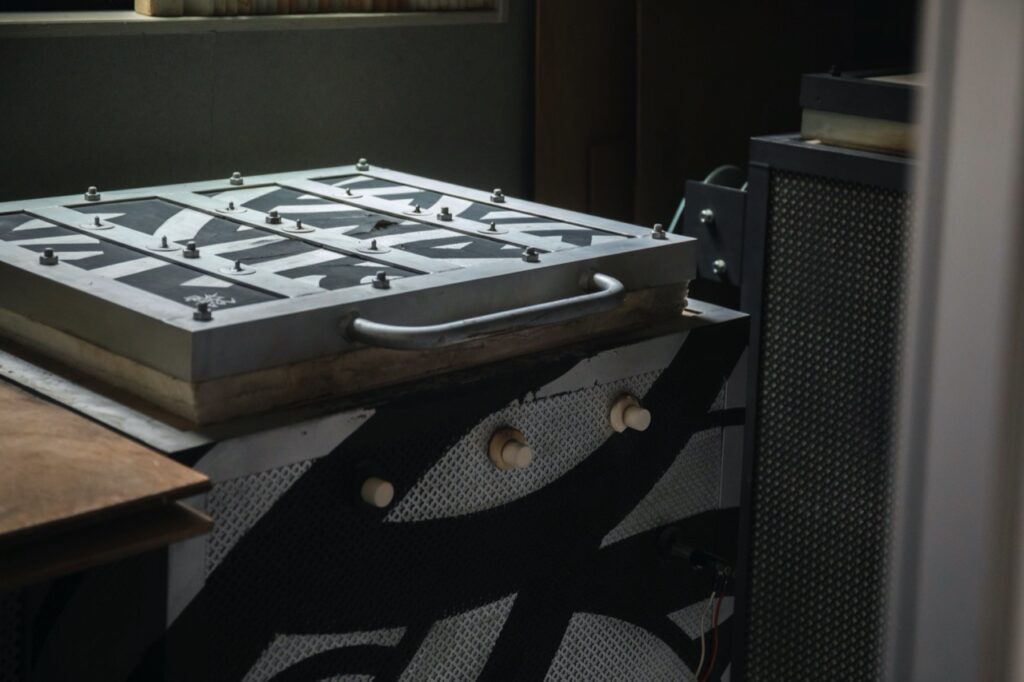

After graduating from a vocational school, he apprenticed himself to ceramic artist Yuichi Inokai, and after three years of live-in training in Nantan City, he became independent. He opened KOHAKUGAMA in Higashiyama Gojo.
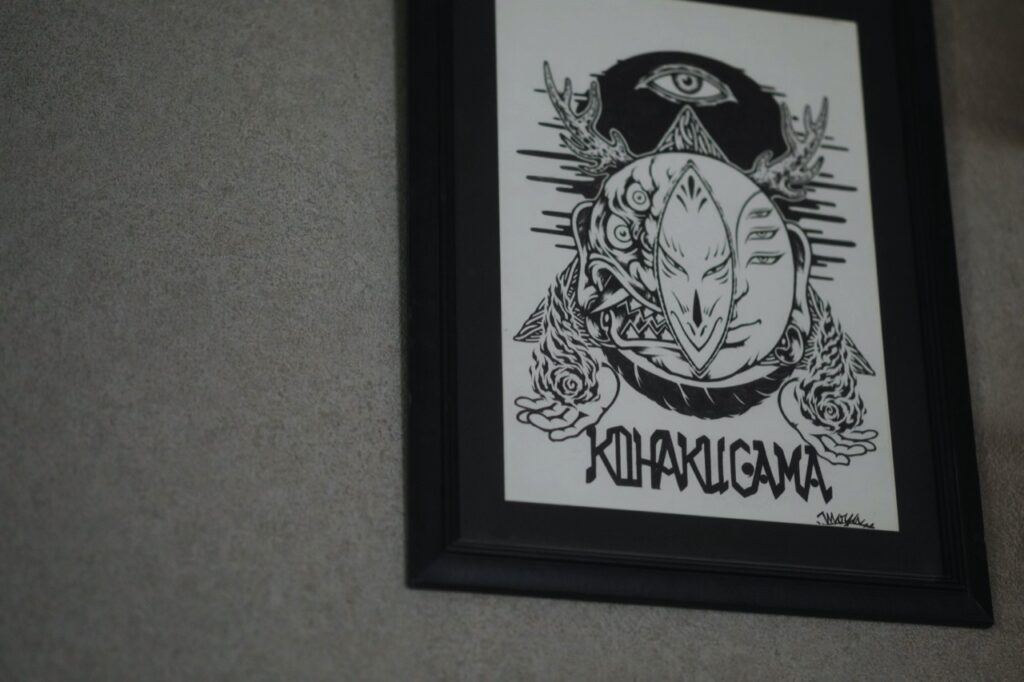

One of Mr. Yamauchi's representative works from that time is a silver-engraved vessel made of black-glazed ceramic ware. Many people pick up these pieces, which are a fusion of clay and metal, without realizing that they are ceramics at first.

From top, the silver-engraved bowl (21.5 cm), 11,000 yen, shows Yamauchi's style well in the contrast between silver and black. The silver-engraved bowl (29.5 cm), 33,000 yen, is finished with a rim-like appearance, and the silver painted on the center part is shaded to give it a rich expression. It can be used as a platter for serving pasta and other dishes at home," says Yamauchi.

Mr. Yamauchi's vessels are first glazed and fired, and then silver or gold is baked on all surfaces. Then, using a tool such as a rheuter, the surface is scraped off by hand. The glaze, silver, and gold that remain on the surface create a pattern.
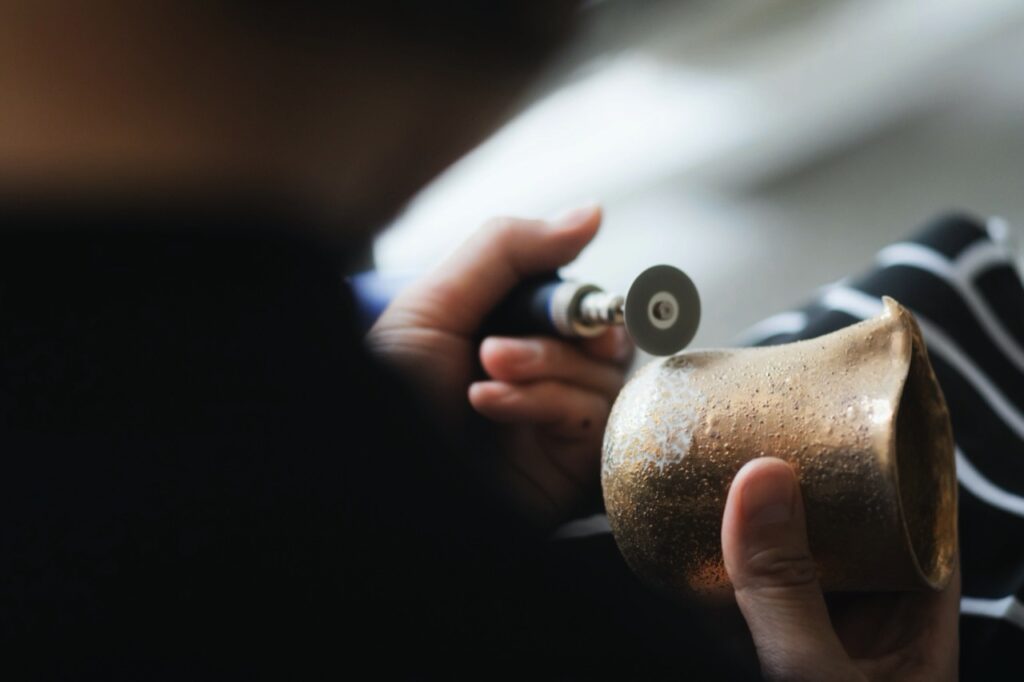

The theme of his recent works is "small scenes," meaning scenes that remain in a corner of my mind. The subjects of my work in recent years have been scenes I have seen while walking or traveling. For example, pine needles on the ground, ripples on the surface of water, shadows created by light, and sunlight filtering through trees. I express such ordinary scenes in my daily life as patterns.
What is engraved on the seemingly cool-looking vessels are natural landscapes. The charm of these works is that the texture of the clay adds a sense of warmth.
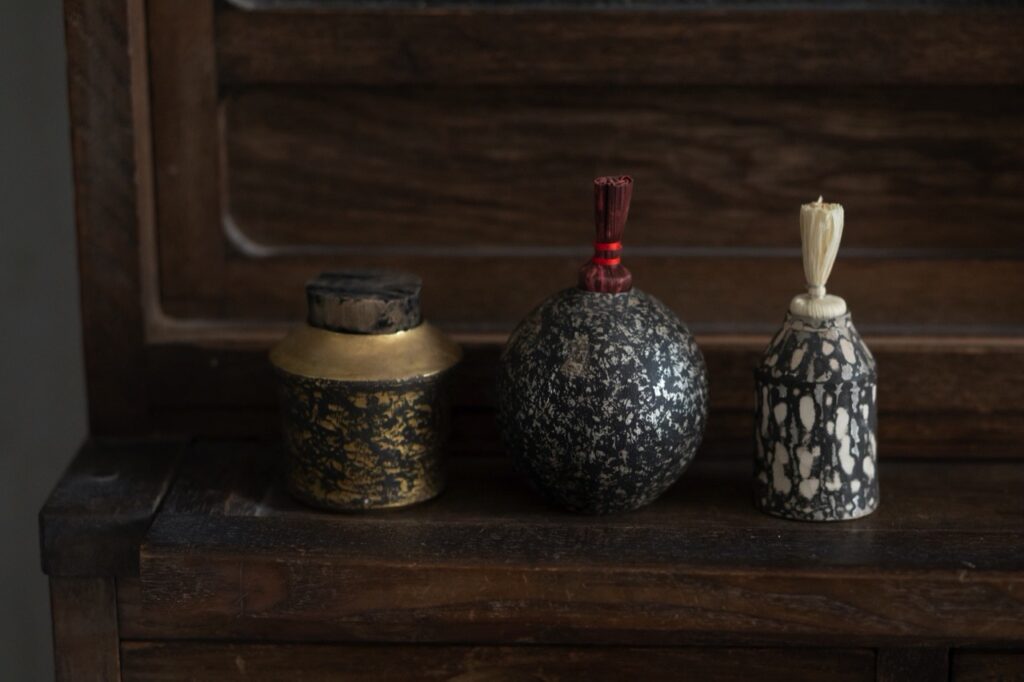
(From left to right) Kin-koku-sai lids, 19,800 yen, with charcoal-dyed and fired cork lids that perfectly match the gold and black tones. The silver-engraving painted zuridashi, one of the tea ceremony utensils and a confectionery vessel called zuridashi that holds small confections such as kompei-sugar, are each 13,200 yen. The silver carving can look like wood depending on the way it is shaved.

Mr. Yamauchi has collaborated with artists of other genres, such as painters, and formed a group called "Utsuwa Danshi" with fellow potters to communicate the appeal of pottery to a wide range of generations. She has also changed her approach to pottery making through her life in the Corona Disaster.
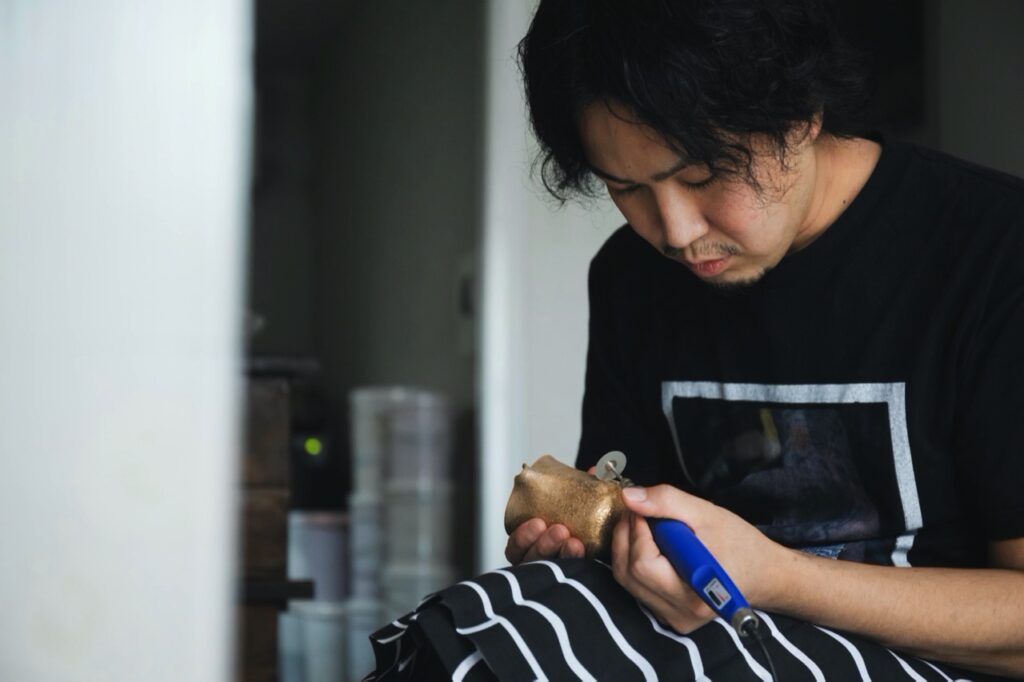

As I spent more time eating at home, I wanted to make something that would make the dining table more enjoyable," he says, and a new series of brightly colored vessels with gold and indigo glazes was born. Mr. Yamauchi laughs, saying that the vessels finished in pink with a thin layer of gold were the first he had ever been told were "cute" by customers.
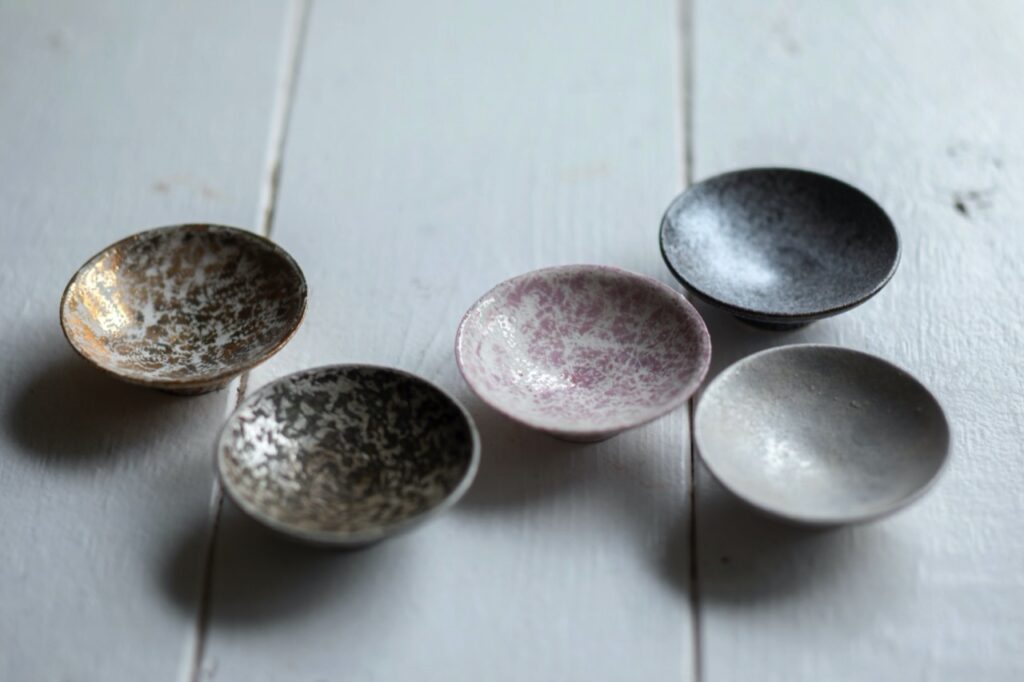
All of Yamauchi's current works are made with either black, white, or indigo glaze combined with silver or gold. (From the front) Silver-glazed soy dish, 2,200 yen, which has a unique flavor depending on the way the silver is applied. The peach-gold carved bean dish with a gentle atmosphere of gold-tarnished pink is 3,300 yen. The silver-engraved soy dish, which has a strong presence even in its small size, is 2,200 yen. The ash-ginsai mame-dish, darker in color and more chic than the silver-plated one, is 2,200 yen. The beautiful gold-inked plate on a white background is worth 3,300 yen.

In the future, I would like to go back to my roots, or rather, I would like to make the tenmoku teacups that inspired me to become a potter. It has been exactly 20 years since I started making ceramics, and I would like to take on a new challenge with my own approach. One cannot help but wonder what kind of works Mr. Yamauchi will create in the next stage of his career.
The name "KOHAKU-GAMA" comes from the location of his first studio at 589. His signature is silver-engraving pottery, using an original technique of hand-polishing the surface of black-glazed pottery with silver paint. In recent years, he has been working on the theme of "small scenes" that linger in the corners of our memories. He has held solo and group exhibitions in Japan and abroad, mainly in Kyoto. He has also collaborated with artists of various genres.
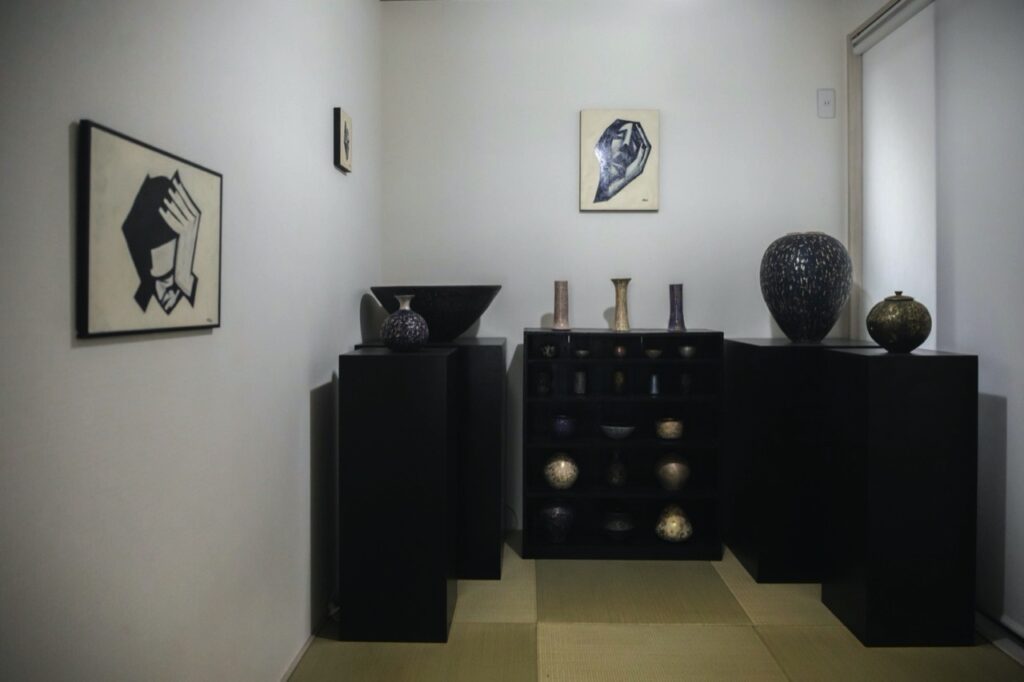

Over 600 interviews per year! An order site carefully selected by the editors who knows Kyoto and Shiga.
nowOfficial LINE friend registration500 yen OFF coupon is being issued!
Distributed every Friday morning at 8:00 am! From new restaurant information to event information that we want to share with you, We deliver articles about Kyoto that are useful to know. About 20,000 people have registered.Click here to add a friend!
 News
News Feature article
Feature article Featured event
Featured event